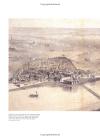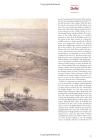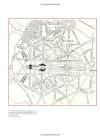Cities: Maps & Lithographs
Last week during one my trips to the Public Library to replenish and renew music for ears, I picked up Peter Whitfield's "Cities of The World - A History in Maps", primarily because it had large photos of old maps of cities.
As the start of his excellent introductory essay, by prefacing it with the following comment (which strongly echoes Italo Calvino's "Invisible Cities", I think) from Charles Lamb's "Witches and Other Night Fears, 1823":
'I am almost ashamed to say how tame and prosaic my dreams are grown. They are never romantic, seldom even rural. They are of architecture and of buildings - cities abroad which I have never seen, and hardly have hope to see. I have traversed, for the seeming length of a natural day, Rome, Amsterdam, Paris, Libson - their chruches, palaces, squares, market-places, shops, suburbs, ruins, with an inexpressible sense of delight - a map-like distinctness of trace - and a daylight vividness of vision, that was all but being awake'
Whitfield writes:
"In writing this book, I have, like Lamb, visited many cities in imagination only. This is not a travel book, but a historical survey on the form and the spirit of a number of famous cities. Those forms are at once apparent in the superb maps illustrated here. They show the historic heart of the cities: the ancient harbor, the hilltop fortress, the loop in the river, and the encircling walls, and they show the houses, churches and palaces that have been added over centuries. Many of these historical maps have a pictorial quality which vanished long ago from the functional town-plan, and by showing the great buildings in elevation, they become architectural panoramas, capturing the richness of the urban fabric."
One will have to love such a book, especially if one had grown up like me staring at atlases, and maps of distant cities, especially those found at the back of complimentary diaries one gets are presents, with their mysterious avenues in foreign languages, wondering what it would feel like to live over there, at that certain street corner, for example the corner of Guatemala and Serrano, celebrated by Jorge Luis Borges in his beloved Buenos Aries?
Also aren't most cities, even the ones we may find ourselves marooned in temporarily, such as the city we call the body, are best approached in the imagination? Yes, this, i think, is required to in order to actually approach the real cities with their bricks, wires, cars, airports, ugly skyscrapers of steel and concrete, hovels and slums, cafes, restaurants serving many exotic cuisines, innumerable conversations and solitudes etc etc, in the Now imaginatively, i.e., with a certain amount of passion.
Given this I only think it is proper that Whitfield chose to construct his book using old maps and other lithographic images, all of which, on a cursory glance, are older than 1900. If there is any criticism I have regarding this book, it is the minor quibble that it is heavily Euro-centric; of the sixty odd cities in the book, only five or six (Beijing, Delhi, Isfahan, Lhasa, Nagasaki, Saigon) are located in the "East". This may be because Whitfield may not have had found or had access old maps of other cities he could have written about, and also because the rise of cities, and related urbanism, are quite correlated to the advent of industrialism.
...
The following are images of pages from this book on Delhi (I "borrowed" them from Amazon.com). Clicking on them, will open each up in a popup window. I woul d then reccomend saving and zooming:
...
These pages lead me to a further digression last night, i.e., finding other sketches and watercolors of Charles Stuart Hardinge made in his Indian Peregrinations. And the Fine Arts Museums of San Francisco have about twenty odd zoom able pictures for our viewing pleasure.
My Daily Notes
... comment





